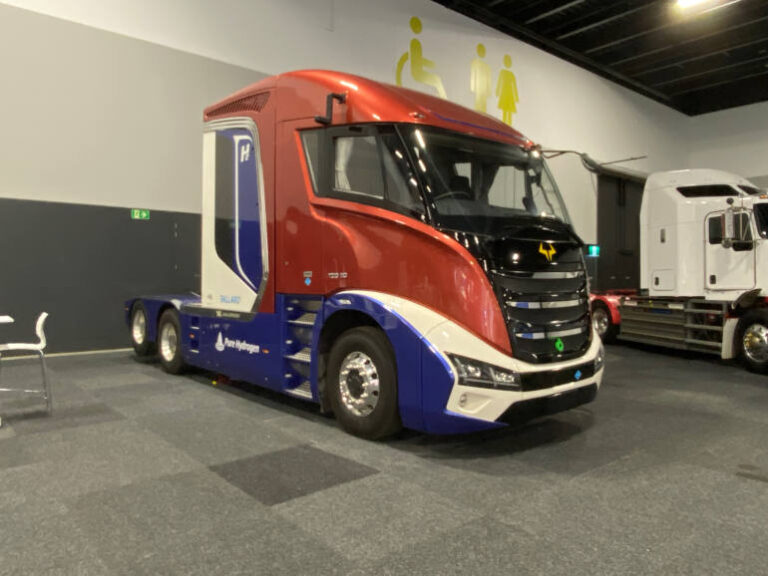The 2025 Smart Energy Expo in Sydney gave attendees a chance to see the future of zero emissions transport up close, with HDrive showcasing its hydrogen fuel cell truck alongside a battery-electric bus. CEO Ben Kiddle said interest in the hydrogen-powered truck remained strong, despite the limited refuelling infrastructure compared to electric charging.
“Look, there’s a lot of people still very interested in hydrogen, even though the gas is not as available or abundant as electricity,” Kiddle told Fleet News Group. “But there’s definitely a place in the industry for hydrogen products.”
The prime mover on display was originally launched at the Brisbane Truck Show two years ago, and has since been in active service in Queensland with a fleet customer. While the vehicle was built as a test and development model, its success has paved the way for a new generation of hydrogen trucks from HDrive.
Next Gen Hydrogen Trucks Ready to Roll
“We have the next generation of trucks – our fully type-approved vehicles,” Kiddle explained. One of these will soon be delivered to Barwon Water in Victoria, operating from the Viva Energy hydrogen station in Geelong. “It’s a great station. I think it’s one of the best commercial stations in the market in Australia today.”
HDrive also has two prime movers destined for Toll Group later in 2025, to be based at the same Geelong hydrogen refuelling facility. These deployments are part of a deliberate effort to aggregate hydrogen truck sales around reliable refuelling infrastructure.
“There’s obviously sales for hydrogen trucks if a station gets built,” Kiddle noted, highlighting the need for coordinated investment to support growth in the hydrogen economy.
Payload Matters: Hydrogen’s Edge Over Batteries
A key talking point at the Expo was the weight advantage of hydrogen trucks over battery-electric alternatives – an important factor for logistics operators. “The truck that you’re looking at here today is around 11 tonnes. Diesel truck equivalent is around 10.5 tonnes,” said Kiddle. “You lose approximately half a tonne in payload, which is negligible.”
In contrast, battery-electric trucks can sacrifice up to four tonnes of payload, a dealbreaker in heavy-duty freight. “In an industry where payload is king, that’s where you need to be competitive,” he added.
HDrive’s hydrogen trucks are also road-ready across Australia. Designed specifically for local conditions, they meet the axle load limits to operate under General Mass Limit (GML), Concessional Mass Limit (CML) and Higher Mass Limit (HML) schemes on any route, offering operational flexibility for large fleets.
Growth Through Proven Deployments
While Kiddle admitted he wasn’t able to attend all the hydrogen panels at the conference, he said real-world deployments are doing more to build confidence than any amount of discussion. “With our vehicles being deployed with Barwon, Toll, and Heidelberg Cement in Western Australia, people see they work. The technology can do the job,” he said. “Organically, this economy will grow.”
This organic growth is being supported by commercial operators willing to lead the charge in alternative fuels, even as government policy and infrastructure catch up. Kiddle confirmed more announcements are expected soon, with electric buses being deployed in North Queensland in the coming months.
Battery Buses Still in High Demand
Alongside its hydrogen truck, HDrive also had a battery-electric bus on display – an 18-seater, DDA-compliant model designed for community transport, mobility services, and last-mile applications. “They’re a lower cost vehicle, easy to charge, and the TCO is probably two to three years,” Kiddle said. “They’re zero emissions, quiet, comfortable to drive.”
While battery buses remain HDrive’s “bread and butter,” the hydrogen truck is a signpost for the next evolution in zero-emissions logistics – one that could offer serious advantages where range, refuelling speed, and payload matter most.
With growing interest from government and industry players, and proof points now emerging in the field, hydrogen fuel cell trucks may be moving from concept to commercial reality faster than many expected.






